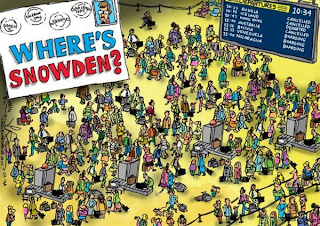Appearing on city streets in New York and other major cities are art installations like the one pictured below. They're simple to make, as you can see in this photo from Laughing Squid:
***
***
I'm assuming that the trapping mechanism is disabled...? You could use construction paper to simulate a saw-toothed trap. By the way, Laughing Squid is a "popular, award-winning blog featuring interesting items of art, culture, and technology" according to Wikipedia.
So, you ask, what is a hipster? According to the most agreed-upon definition in the Urban Dictionary,
Here's a video for further identification:
***
***
Artists do have fun -- and, apparently, so do hipsters.
-- Marge
***
 |
| Jeff Greenspan and Hunter Fine have been installing “Hipster Traps” around New York City which include sunglasses, a yellow bicycle chain, a Holga camera, a can of PBR and a pack of American Spirits as bait. Jeff is the same artist who came up with the idea for last Summer’s Improv Everywhere prank “The Tourist Lane”. Next up: Bridge & Tunnel Traps. |
I'm assuming that the trapping mechanism is disabled...? You could use construction paper to simulate a saw-toothed trap. By the way, Laughing Squid is a "popular, award-winning blog featuring interesting items of art, culture, and technology" according to Wikipedia.
So, you ask, what is a hipster? According to the most agreed-upon definition in the Urban Dictionary,
Hipsters are a subculture of men and women typically in their 20's and 30's that value independent thinking, counter-culture, progressive politics, an appreciation of art and indie-rock, creativity, intelligence, and witty banter.There's much more information on this topic at the web page. As of today at 11:30A AkDT the votes for this definition are 120121 up, 29574 down.
Here's a video for further identification:
***
***
Artists do have fun -- and, apparently, so do hipsters.
-- Marge


























